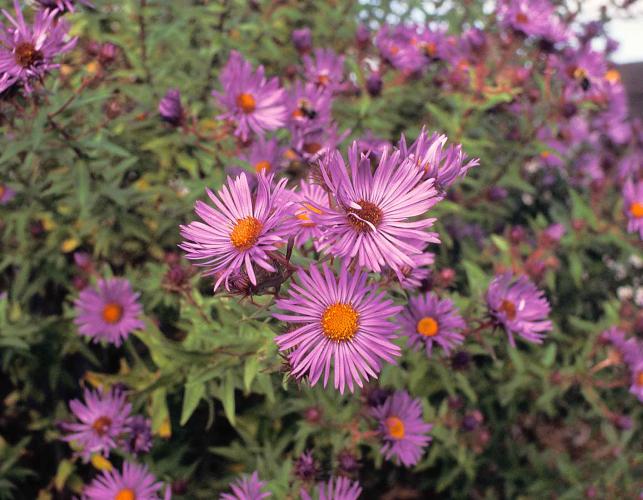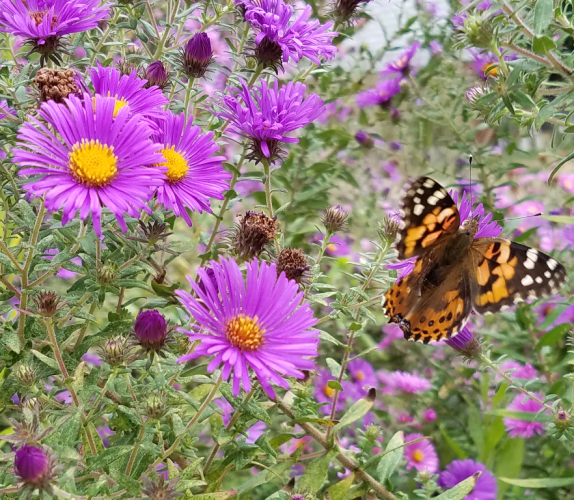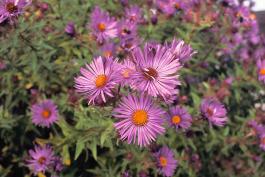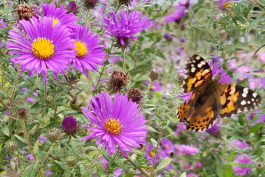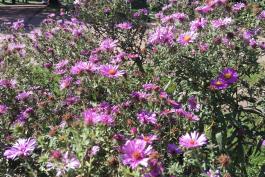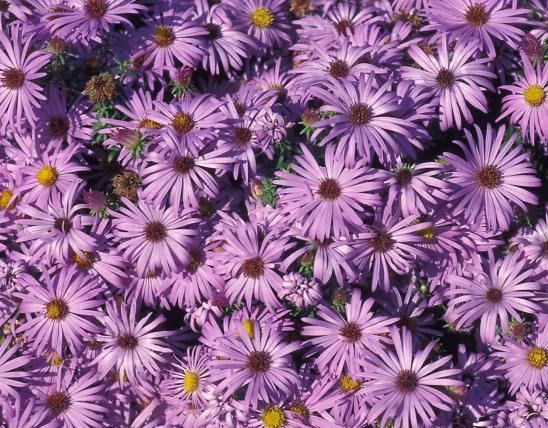
The tallest of our many native asters, branching toward top of stems. Flowerheads many, about the size of a quarter, with many (more than 40) ray florets, reddish purple to purple (pink to white elsewhere, and crimson, magenta, and darker shades in cultivation). The disk is yellow. Blooms August–October. Leaves alternate, many, narrowly lance-shaped, clasping the stem, and auriculate (with ears).
Similar species: There are 24 species of Symphyotrichum in Missouri, plus many hybrids and varieties. This species is notable for its large flowers, with many petallike ray florets, and its many stem leaves.
Height: to 8 feet.
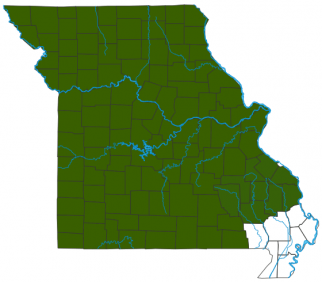
Scattered statewide, but apparently absent from the Mississippi Lowlands and uncommon in portions of the Glaciated and Unglaciated Plains. Cultivated statewide.
Habitat and Conservation
Found in bottomland prairies, moist depressions of upland prairies, fens, bases of bluffs, banks of streams and rivers, margins of ponds and lakes; also pastures, fencerows, banks of ditches, railroads, and roadsides. Selections of this species are common in gardens. One of our showiest native fall-blooming wildflowers, New England aster contributes to Missouri's colorful autumn landscape.
Status
For many years, nearly all native North American asters were considered members of the genus Aster, formerly a very large genus that is now considered to comprise Old World species almost exclusively. Molecular (DNA) studies have shown that the former genus had included several groups that deserve to be treated as separate genera. The only "true aster" (in the genus Aster) that grows wild in Missouri is a native of Eurasia that escapes from gardens.
Human Connections
The most popular of our native asters in cultivation, with several cultivars available with different growth forms and flower colors. A showy species, it usually begins flowering earlier than most of the other asters and tends to stay in flower for a longer time.
Ecosystem Connections
Many types of bees, flies, butterflies, and skippers visit the flowers. Cross-pollination by insects is necessary in order for the seeds to be viable. Moth caterpillars and various other insects eat the leaves. Deer and some other mammals eat the foliage, and wild turkey eat the seeds.
